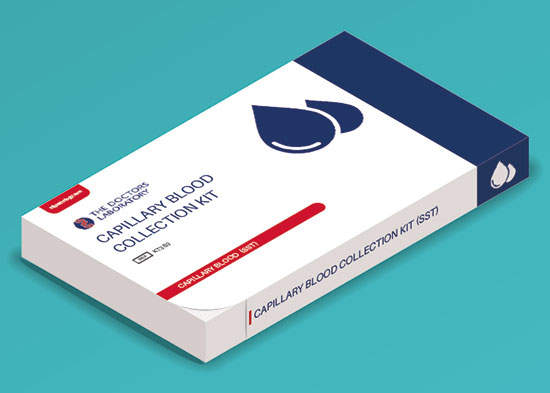A Testosterone Blood Test measures the level of testosterone in the blood and is used to assess various aspects of health related to hormone balance in men. Testosterone is a crucial hormone responsible for the development of male reproductive tissues, secondary sexual characteristics, muscle mass, bone density, and overall well-being.
Blood Test Cost – £69
Purpose of the Testosterone Blood Test
- Diagnose Hypogonadism
- Symptoms: Low libido, erectile dysfunction, fatigue, depression, decreased muscle mass, increased body fat, and infertility.
- Use: Confirms low testosterone levels indicative of hypogonadism.
- Evaluate Puberty and Development in Boys
- Symptoms: Delayed or precocious puberty.
- Use: Assesses if testosterone levels are appropriate for age and development.
- Monitor Hormone Therapy
- Purpose: To track the effectiveness of testosterone replacement therapy in men with diagnosed low testosterone.
- Use: Ensures therapy is within the therapeutic range and adjusts dosage as needed.
- Assess Infertility in Men
- Symptoms: Difficulty in conceiving a child.
- Use: Part of an infertility workup to evaluate potential hormonal causes.
- Investigate Causes of Osteoporosis in Men
- Symptoms: Decreased bone density, increased fracture risk.
- Use: Identifies low testosterone as a potential contributing factor.
- Evaluate Symptoms of Andropause
- Symptoms: Similar to hypogonadism, typically occurring in older men.
- Use: Diagnoses age-related testosterone decline.
Types of Testosterone Tests
- Total Testosterone
- Measures: The total amount of testosterone in the blood, including both bound and free testosterone.
- Normal Range: Typically 300-1000 ng/dL, but ranges can vary by lab and age group.
- Free Testosterone
- Measures: The unbound testosterone available to tissues.
- Normal Range: Approximately 1-3% of total testosterone; specific ranges vary by lab.
- Bioavailable Testosterone
- Measures: The fraction of testosterone that is not bound to sex hormone-binding globulin (SHBG) and is available to tissues.
- Normal Range: Varies depending on the individual’s total testosterone and SHBG levels.
Preparation and Procedure for Testosterone Blood Test
- Preparation: Fasting may not be required, but follow specific instructions from the healthcare provider. Morning samples are preferred due to natural daily fluctuations in testosterone levels.
- Procedure: A blood sample is drawn from a vein, typically in the arm.
Factors Affecting Testosterone Levels
- Age: Testosterone levels naturally decline with age.
- Time of Day: Levels are highest in the morning and can fluctuate throughout the day.
- Health Conditions: Obesity, chronic illness, and certain medications can affect testosterone levels.
- Lifestyle Factors: Stress, physical activity, and diet can influence levels.
Follow-Up
- Consultation: Discuss results with a healthcare provider to understand implications and next steps.
- Additional Testing: If abnormalities are found, further tests may be conducted to pinpoint the cause, such as LH and FSH levels, prolactin levels, or imaging studies.
- Treatment: Based on results, treatment options may include lifestyle changes, hormone therapy, or addressing underlying health conditions.
Conclusion
The Testosterone Blood Test is a vital tool for assessing hormonal health in men, diagnosing conditions related to low or high testosterone levels, and guiding appropriate treatments. Regular monitoring and consultation with a healthcare provider ensure optimal management of testosterone-related health issues.
Results – 4hrs from Laboratory receiving sample







